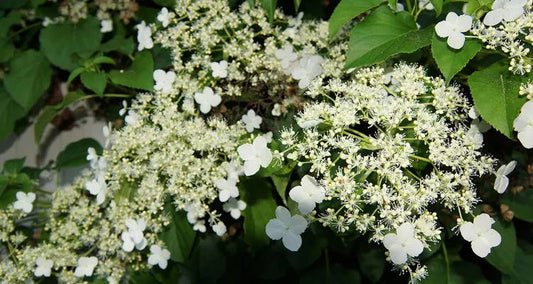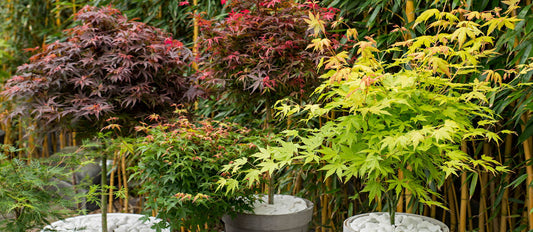Cherry trees are beautiful addition to any garden, providing an array of spring colours when in full blossom. These flowers can be single, double or semi-double and range in colour from pinks to whites. The flowers of this tree are the main attraction but the leaves that appear after the flowers complete it. They are a bright green colour and remain that way throughout the summer. Then, come autumn, the leaves transform into a deep reds, burnt orange and crisp yellow.
The Japanese flowering cherry trees are a large group within the genus ‘Prunus’. Some are planted in containers to brighten up patios, you may well find them lining walkways or as focal points in the middle of lawns
Flowering cherry trees will attract a wide array of wildlife including bees who are drawn to the sweet smelling flowers and birds who enjoy eating its fruit. There are several different ornamental cherry varieties that can all be pruned in the same way.
Pruning flowering cherry trees
It is important to prune your flowering cherry tree to help keep it looking attractive as well as healthy. Pruning will encourage blooming, remove unwanted growth as well as dead and diseased branches, plus it shapes the tree. Pruning this tree is straightforward, simply examine it each year and trim accordingly.
When and how do you prune flowering cherry trees?
The best time to prune your flowering cherry tree is immediately after flowering. This will promote new growth and flower display and avoid it becoming overgrown and weak.
In common with many other garden trees and shrubs, the sap flow begins early in winter, so Prunus must never be pruned in spring as this would cause the tree to bleed.
What you actually need to do will depend on the time of year:
- June: If you want to tidy up the tree and remove low side branches, June is the best time to do this. Larger branches can also be trimmed or cut back this month. Secateurs will probably not be powerful enough. You need to use good tools, such as a lopper or pruning saw, to ensure a smooth, clean wound.
- October-November: More drastic pruning should be postponed until October and November.
- March-September: Of course, in the case of suckers we do not have to be concerned about bleeding. These wild shoots that develop at the base of the plant can be removed throughout the season, from March to September.




